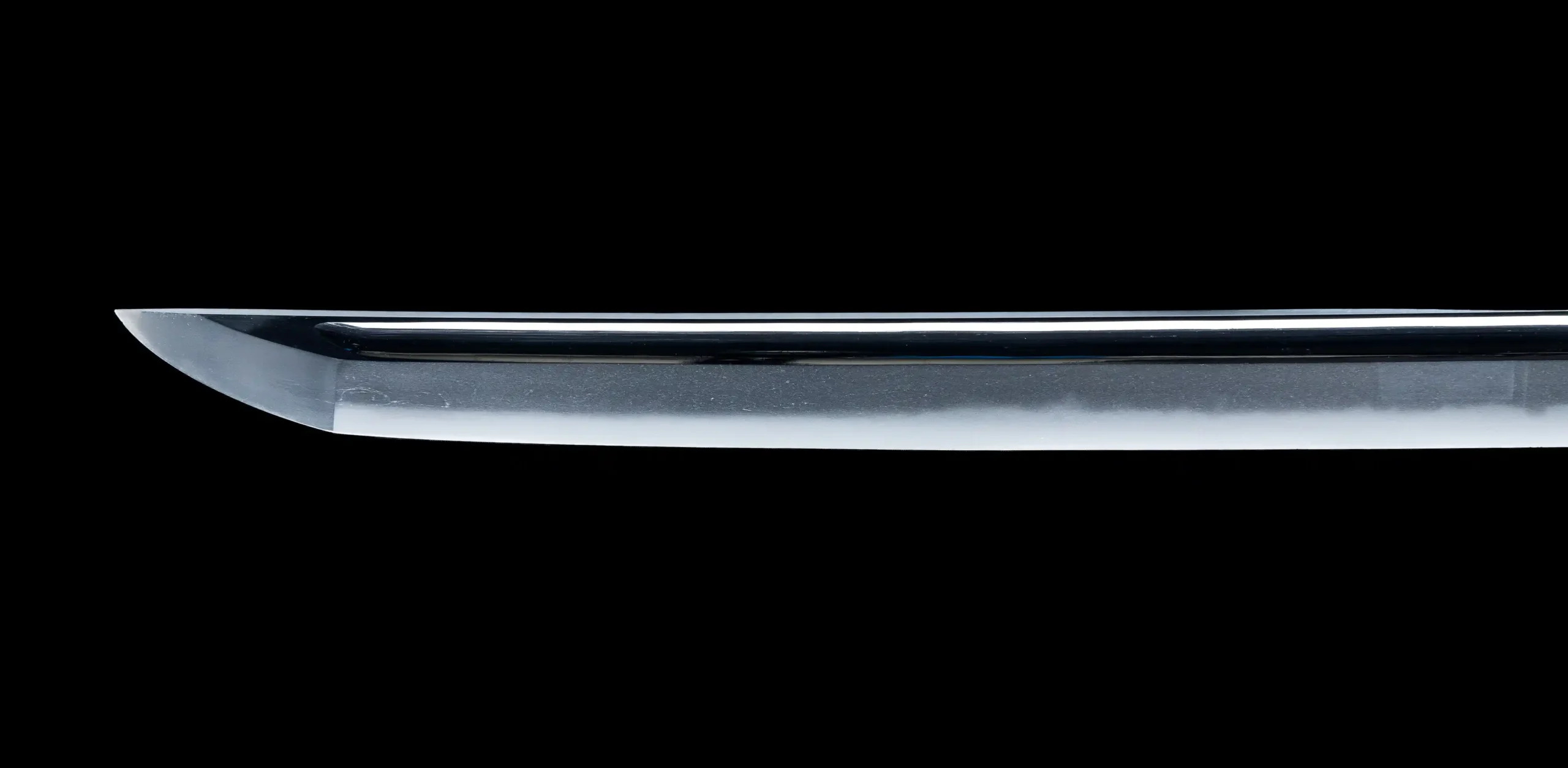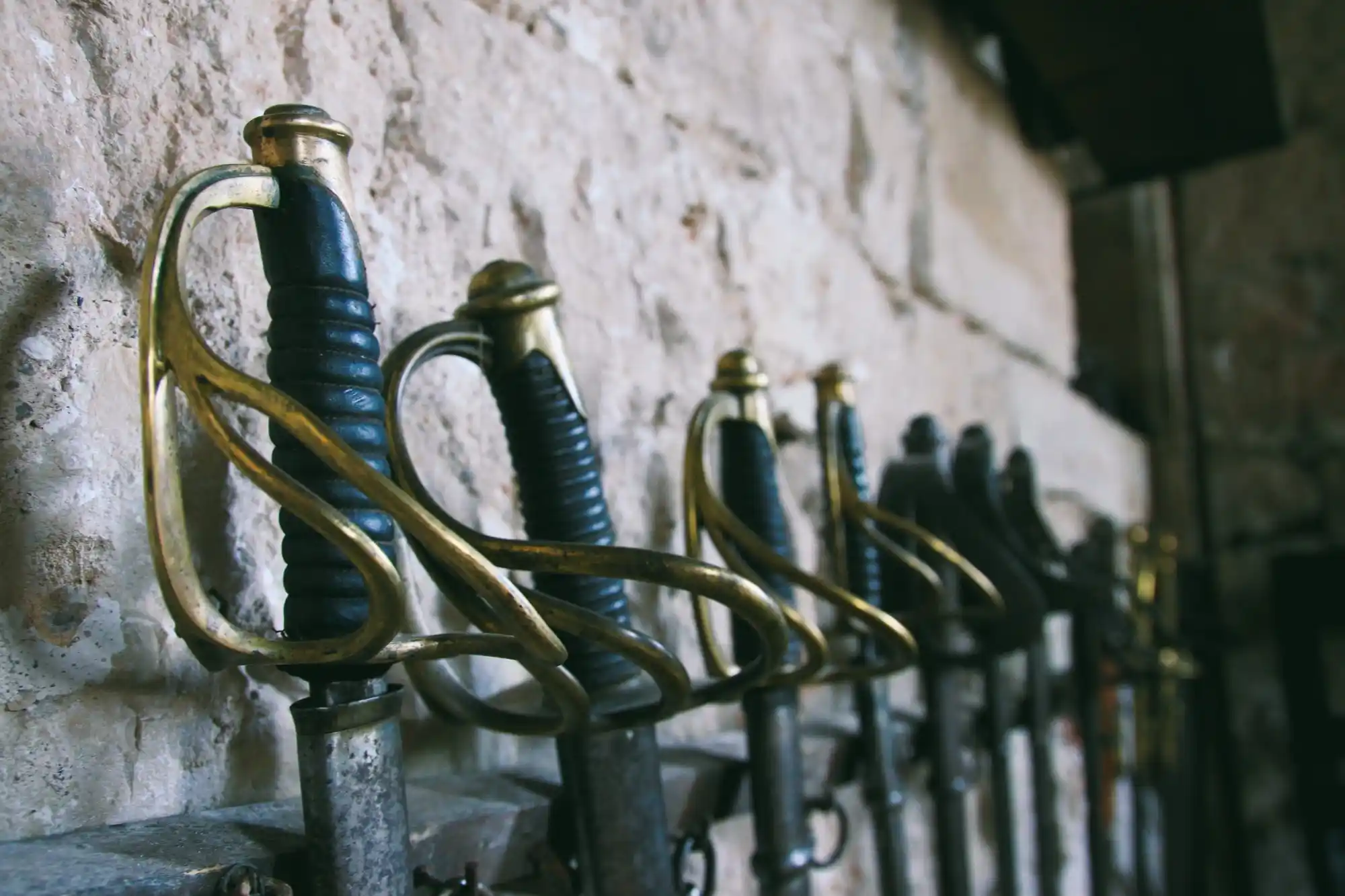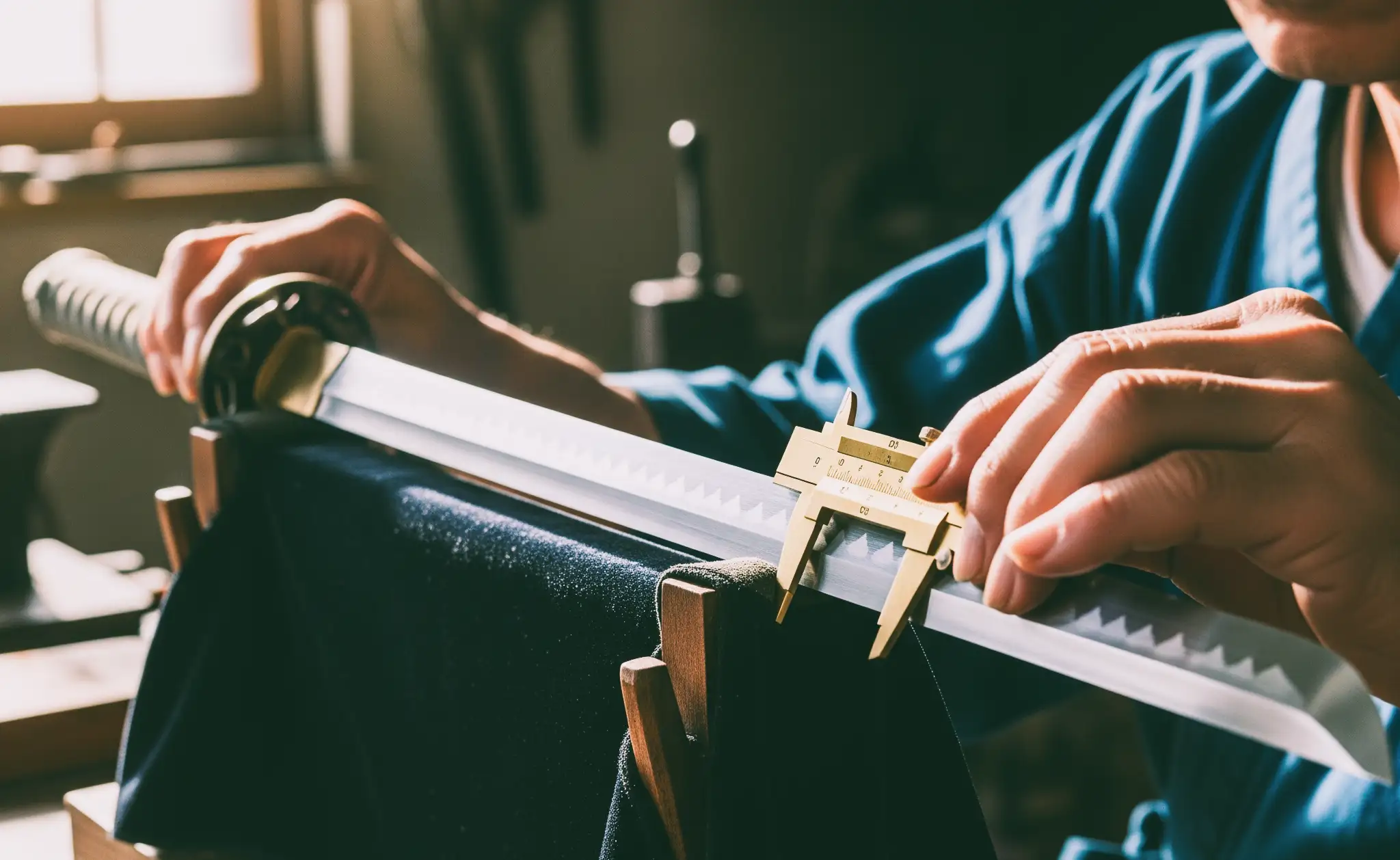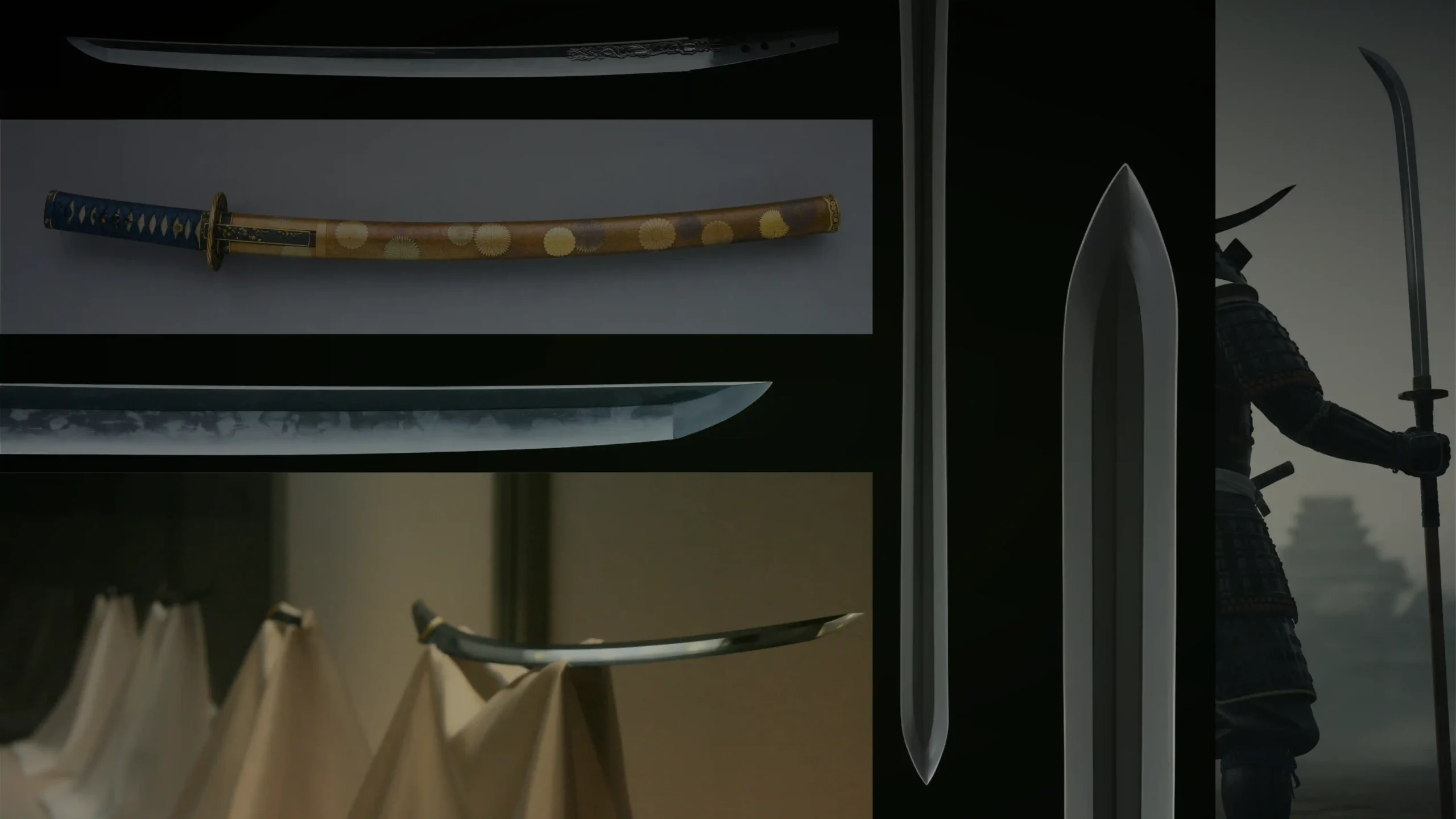We may earn revenue from the products available on this page and participate in affiliate programs. Learn more >
A part of owning a katana is taking care of it, and besides using it carefully, cleaning and oiling are the second most important parts. Functional katanas are made of carbon steel, and if you do not maintain the blade, there is a high chance it will rust and oxidize. To prevent that from happening, you should clean and oil it regularly, and if you are not sure how to do that, in this article I will show you exactly how.
When and How Often Should You Clean Your Katana?
First, you need to understand when or in what situations you should clean your katana, starting with the first cleaning. The first cleaning is recommended right after you receive the sword. Remove the old factory oil and apply a fresh coat. If you plan to test your katana first, simply wait until you are done, then clean and oil it.
If you are not planning to use it and it will stay displayed on a kake for a long time, cleaning it every three to four months is usually enough. However, if the place is more humid, make sure to check it more often.
The next time you should clean it is whenever you or someone else touches the blade with bare hands. Fingerprints can leave marks that make that area rust faster and may cause small rust spots on the blade.
But most importantly, clean your katana right after each use. No matter what you are cutting, this is the only time you clean it more often, not just to maintain the blade but also to take care of the scabbard.
How to Clean a Katana- Step by Step
If your katana came with a cleaning kit, you can just follow the steps below. If it didn’t, you can easily find a maintenance kit online, and if you’re not sure which one to pick, we already made an article listing the best katana cleaning kits recommended by users. Once you have it, you can continue with the cleaning steps, but before that, let me give you a quick introduction to each item and its function.
A cleaning kit will include:
Choji Oil – A clove-based oil. You’ll apply this as a final layer to keep the katana polished and shielded.
Uchiko Ball – A small cotton ball filled with fine polishing powder. This helps lift off old oil and debris, prepping the blade for a fresh clean.
Cleaning Cloths – Several cloths are included for different stages (nuguigami). One for wiping away residue, one for polishing, and another for applying the oil.
Hammer – Used to carefully tap out the bamboo pegs, allowing you to disassemble the handle if deeper cleaning is needed.
Step 1: Get Everything Ready

Before you start cleaning, gather all your supplies, including your cleaning kit and your sword (or swords).
Step 2: Disassemble the Katana (Optional)
Regular disassembly of a katana isn’t required after every use. For frequent practice or cutting, simply cleaning the blade is usually sufficient. However, if a considerable period has elapsed since the last full cleaning, disassembly is recommended to inspect for rust.
To disassemble the katana, first remove the pegs (mekugi). Using a mekugi-nuki (peg removal tool), gently tap them out. Once the pegs are removed, carefully slide the blade out of the handle (tsuka).

Step 3: Clean the Blade Using a Soft Cloth
Grab the nuguigami from the kit (or a clean, soft cloth). Carefully wipe down the blade to remove any old oil, dust, or residue. Start from the base and work your way towards the tip, using a gentle, consistent motion.
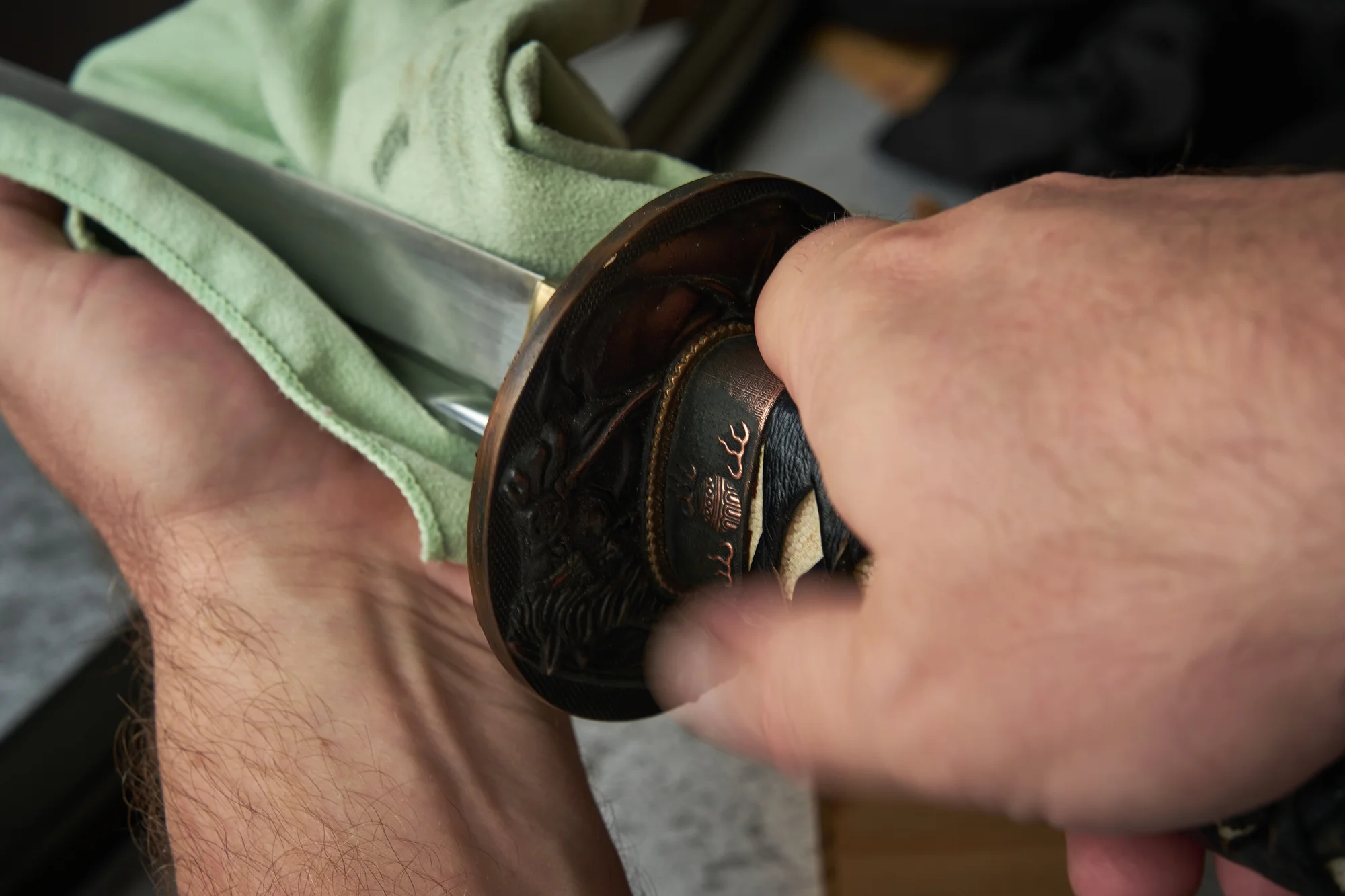
Step 4: Apply the Uchiko Powder to the Blade
Next, take the uchiko ball and lightly tap it along the length of the blade (both sides).
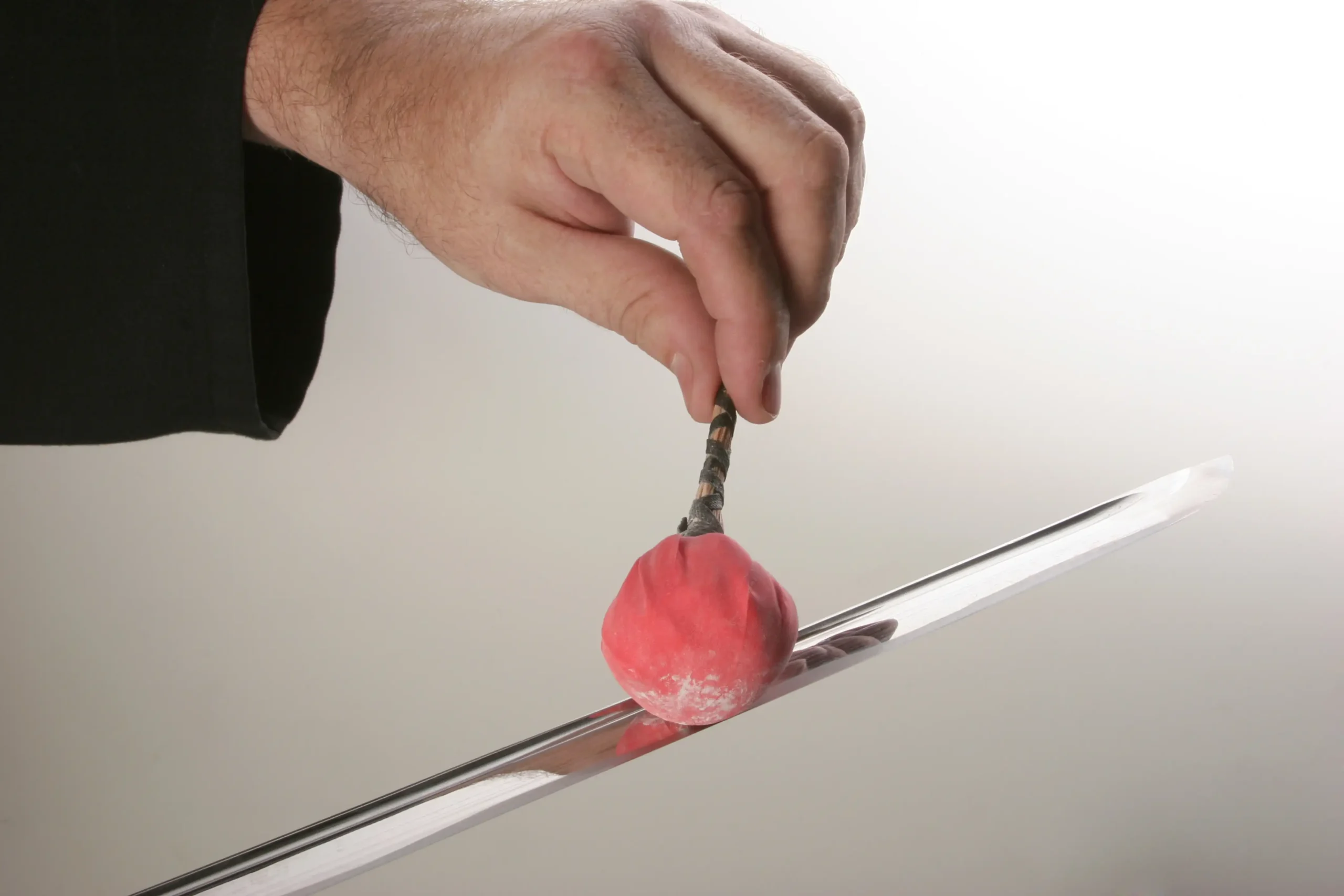
Step 5: Remove the Powder with Another Cloth
Use another fresh piece of nuguigami (or clean cloth) to wipe off the powder. Make sure to use smooth, even strokes so the blade ends up completely clean and free of any particles.
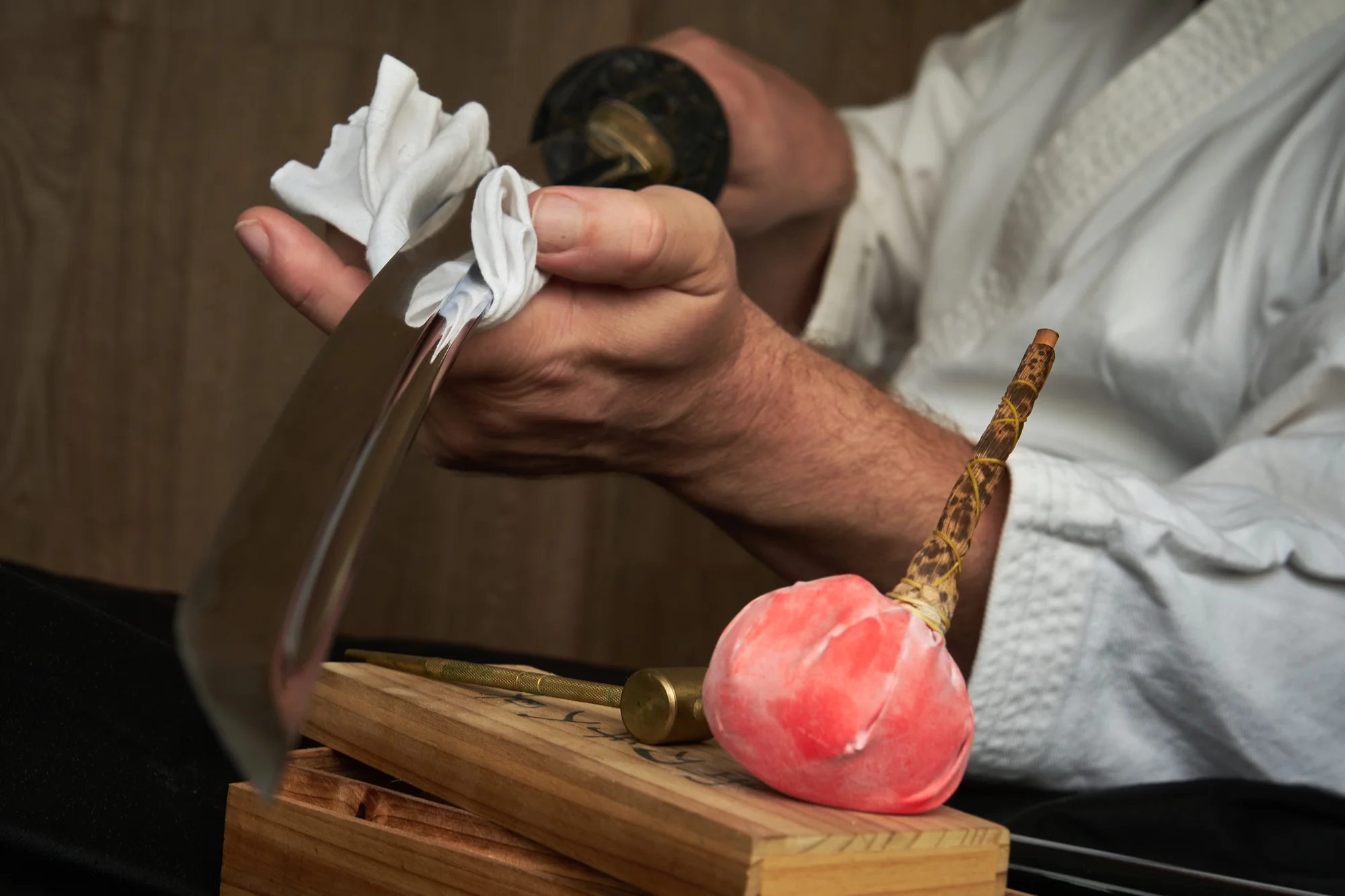
Step 5: Apply the Choji Oil
Apply a small amount of choji oil directly onto the blade or onto the cloth you’re using. Spread the oil evenly along the entire length of the blade, from the base to the tip, using gentle, consistent strokes.

Step 6: Reassemble the Katana (If Disassembled)
Place the habaki (collar) onto the blade, followed by the seppa (washers) and tsuba (guard). Then, carefully slide the handle (tsuka) back onto the blade, aligning it with the peg hole. Insert the mekugi and tap gently if needed to secure it firmly.

Step 7. Sheath your Sword
Once cleaned and oiled, check one last time to make sure that there is no dry spots on the blade. Place the katana back in its saya (scabbard). Always do this gently to prevent any nicks or scratches to the blade.
Things You Should Avoid When Cleaning

Touching the Blade with Bare Hands
The natural oils from your skin can lead to corrosion. Always avoid direct contact with the blade, and use gloves or handle it by the handle only.
Over-Oiling
Over oiling can oxidize the blade or even deteriorate the scabbard from the inside.
Cleaning a Katana Without a Kit: Using Household Items
Even without a dedicated katana maintenance kit, you can still clean your blade using readily available household items. While not ideal replacements for traditional tools, these alternatives can effectively preserve your katana’s condition.
To begin, gather a soft, lint-free cloth, rubbing alcohol, and either mineral oil or baby oil. The rubbing alcohol will dissolve old oil, dirt, and fingerprints. Lightly dampen the cloth with alcohol and gently wipe the blade down, ensuring it is completely dry afterward.
Finally, using a fresh cloth, apply a very thin layer of mineral oil or baby oil to the blade.
Using household items for katana maintenance isn’t ideal, but it’s a practical way to care for your sword when a proper kit isn’t available.
Last Words
Learning how to clean a katana is one of the easiest and most important things you can do. Just by following some easy steps, you will ensure that your blade stays safe and shiny, ready for the next battles. And if you have noticed that the edge is not as sharp as it used to be, here’s how you can sharpen it yourself.
FAQ
Can I Use Olive Oil for a Katana?
Olive oil is not recommended for cleaning a katana. It can become sticky over time and may attract dust and residue, leading to potential damage.
Can I Use Vaseline on a Katana?
Vaseline is not recommended. It’s thick, sticky, and can attract dust and debris, which may lead to buildup and make cleaning difficult.
What Oil Should I Use to Clean Swords?
Use choji oil or light mineral oil to clean swords. These oils protect against rust without leaving a heavy residue. Avoid cooking oils, as they can become sticky and attract dust.
Can I Clean My Katana with Rubbing Alcohol?
Yes, you can use rubbing alcohol to clean your katana. After you must apply a light coat of oil to protect the blade from rust.
Can I Clean a Katana with Water?
It’s not recommended to clean a katana with water, as it can cause the blade to rust quickly.


